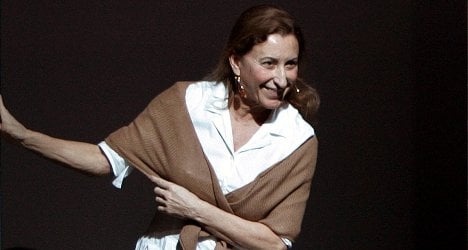Who is Miuccia Prada?
She is the fashion designer behind the famous Italian brand Prada, founded by her grandfather in 1913.
Why is she in the news?
Prada was the only Italian to make it onto a list of the world’s most powerful women, compiled by US business journal Forbes.
READ MORE: Italian fashionista among most powerful women
Why did she make it onto the list?
Prada has made it to the top of her trade and, as put by Forbes, is ““widely credited with recreating the brand's image, making it synonymous with understated, clean-cut elegance.”
She is also one of the richest people in the world, with a net worth of $10.4 billion (€7.6 billion).
How does she stand out from the fashionable crowd?
Despite being born into the Prada family, she didn’t immediately go into fashion.
Described by Vogue magazine as a “Communist-leaning, Yves Saint Laurent-wearing reluctant heiress”, Prada instead went to Milan University where she studied political science.
She then began designing accessories for the fashion house, but it wasn’t until the late 1970s that she started taking a greater interest in Prada.
What happened then?
She fell in love. Prada met Patrizio Bertelli, owner of leather goods companies, and became his business partner.
According to her company profile, at this point in her career, “together with Patrizio Bertelli, she becomes the driving force of the development and international expansion of Prada.”
When the couple were not busy taking over the fashion world, they married and had two children.
How has she changed Prada?
Prada stepped into the spotlight at the end of the 1970s with the brand’s first women’s footwear collection, before jumping onto the international scene by opening stores in London, Madrid, New York, Paris and Tokyo.
She put her stamp on the fashion house in 1993 by creating a new brand, Miu Miu, and has since overseen new ventures including Prada sunglasses and mobile phones.
What has she done outside of fashion?
In 1993 she and Bertelli created a cultural foundation, Fondazione Prada, which began by hosting art exhibitions. It has since been expanded to encompass other areas, including architecture and cinema, and in 2011 plans were unveiled for a new exhibition space in Venice.
Has she faced controversy?
Yes. In February, international media reported that an Italian prosecutor had opened an investigation into Prada over alleged tax evasion.
The company reportedly agreed last year to pay around €400 million to the tax authorities, in a deal which would see a holding company transferred from Luxembourg to Italy, the Financial Times said. Prada’s legal team, however, told the newspaper they were not aware of the probe.
How is Prada viewed in the fashion industry?
“She has often led like the Pied Piper, with the fashion pack zigzagging tightly behind,” according to Vogue.
In December, Prada was named International Designer of the Year at the British Fashion Awards, described as being “renowned for her season-defining collections that consistently set the agenda of the fashion industry.”
Gywneth Paltrow with Miuccia Prada (@Prada) – winner of the International Designer of the Year #BFA pic.twitter.com/SnUejKNK8C
— BFC (@BFC) December 2, 2013
Don't miss a story about Italy – Join us on Facebook and Twitter.




 Please whitelist us to continue reading.
Please whitelist us to continue reading.
Member comments